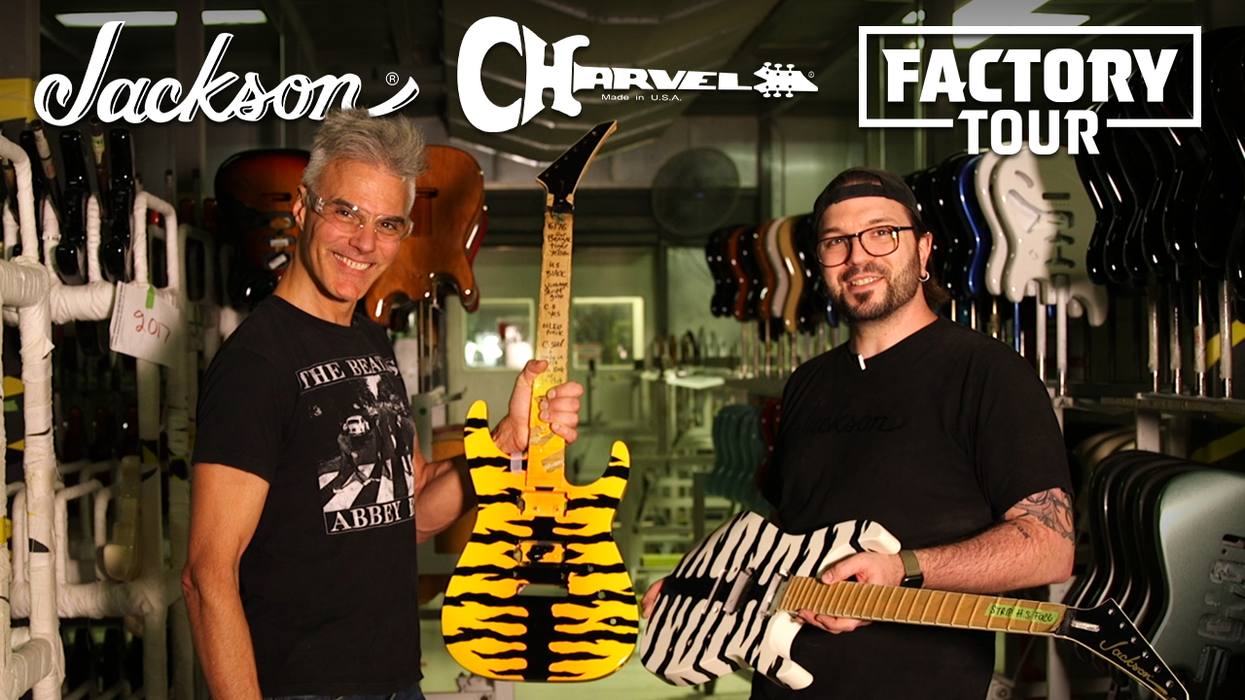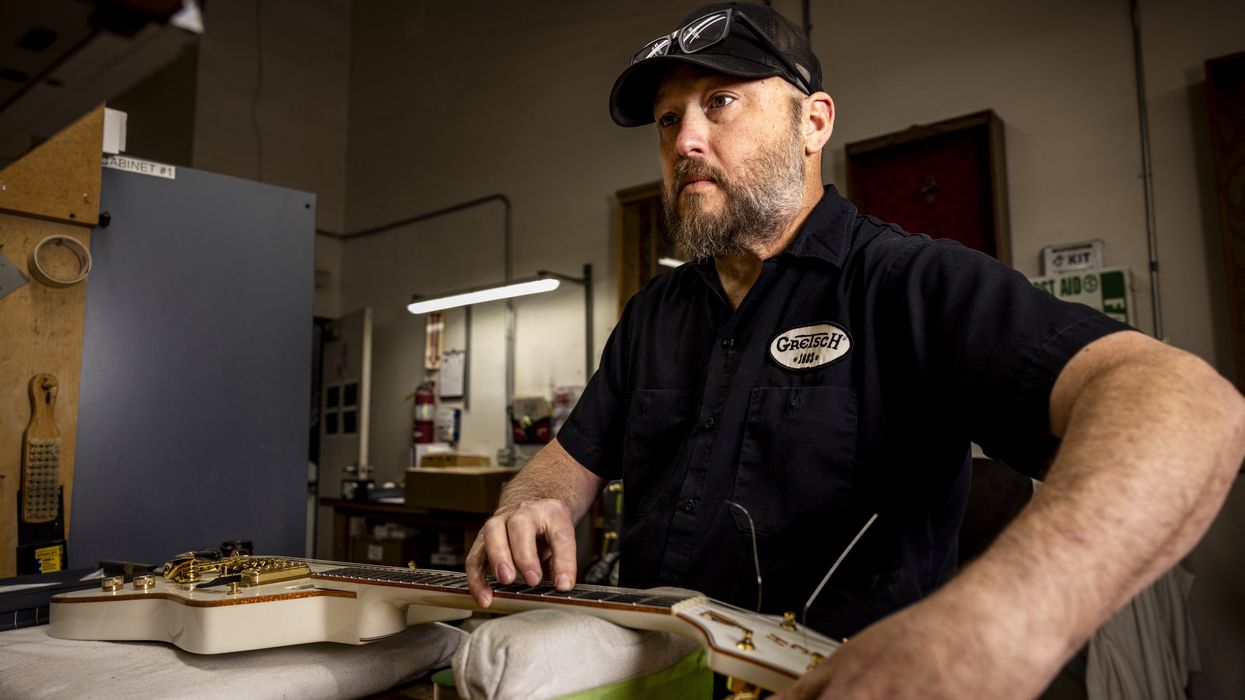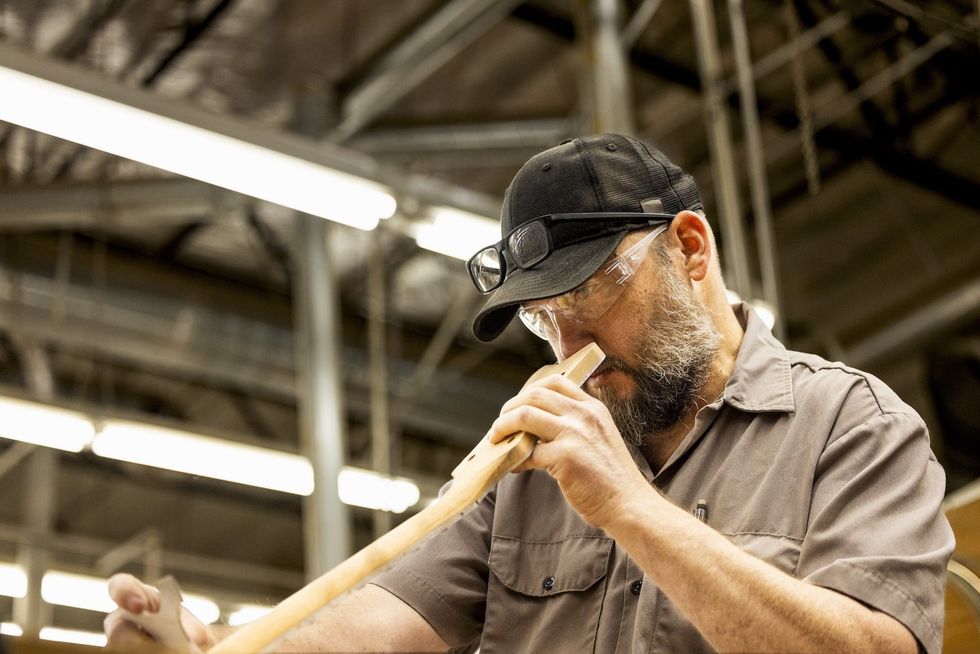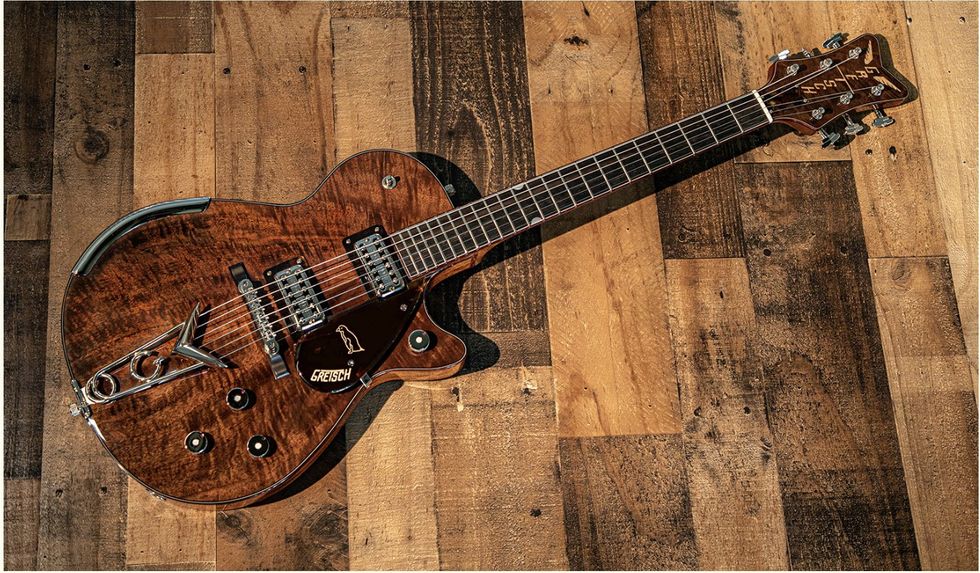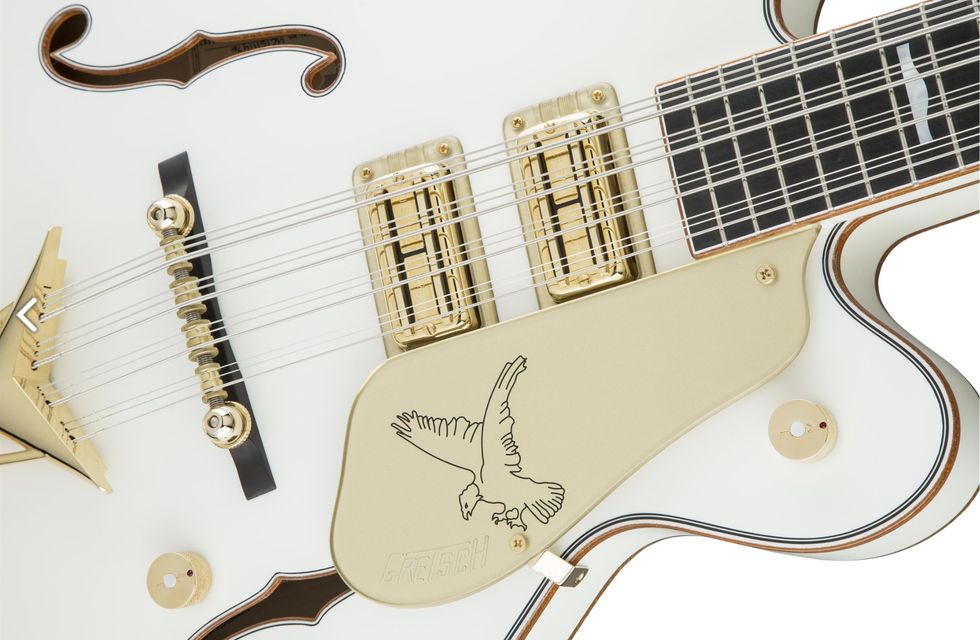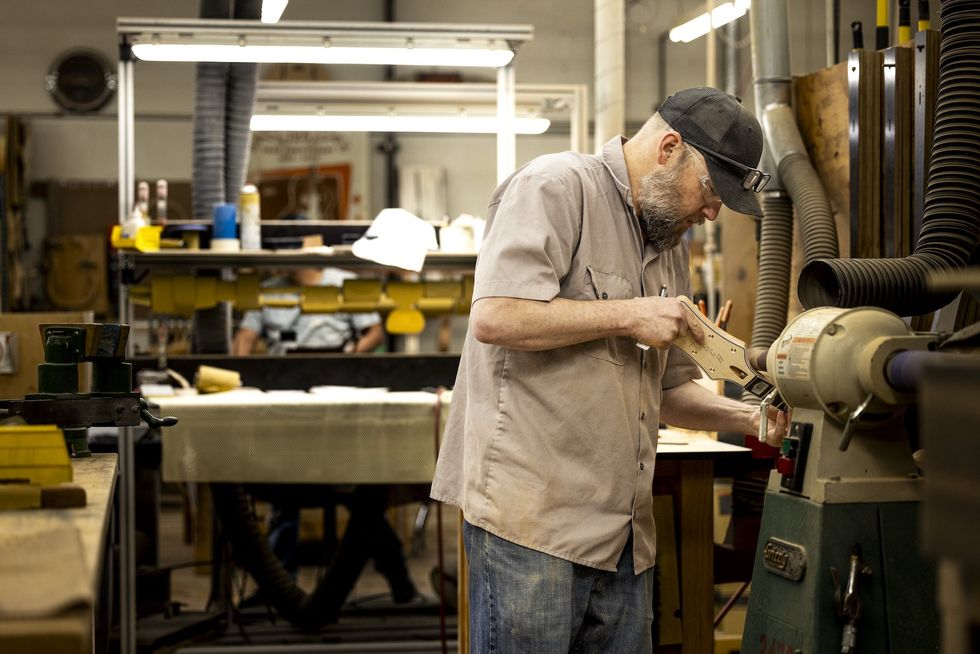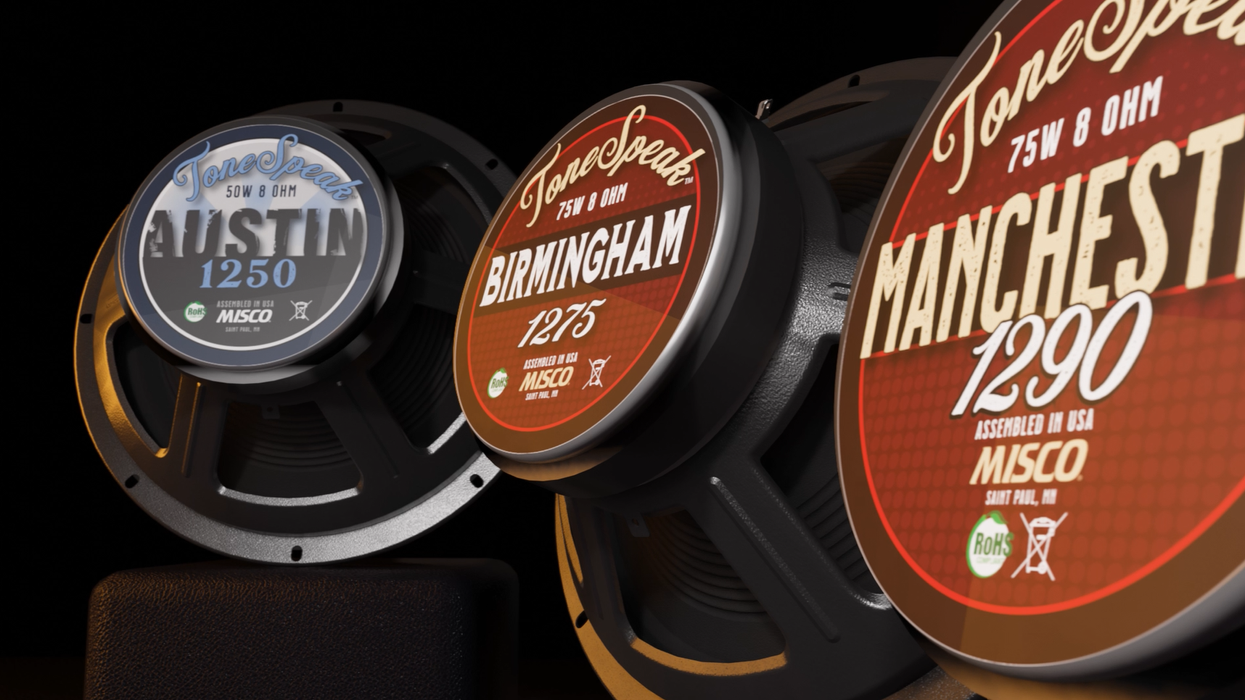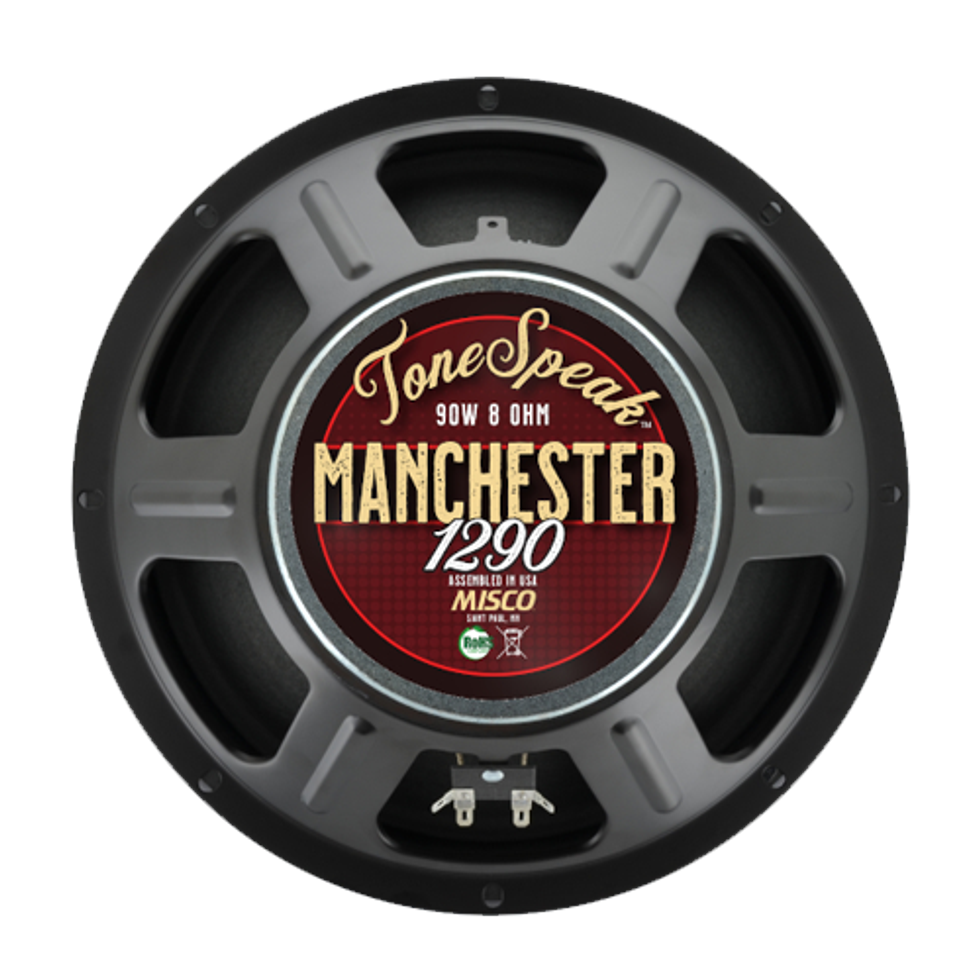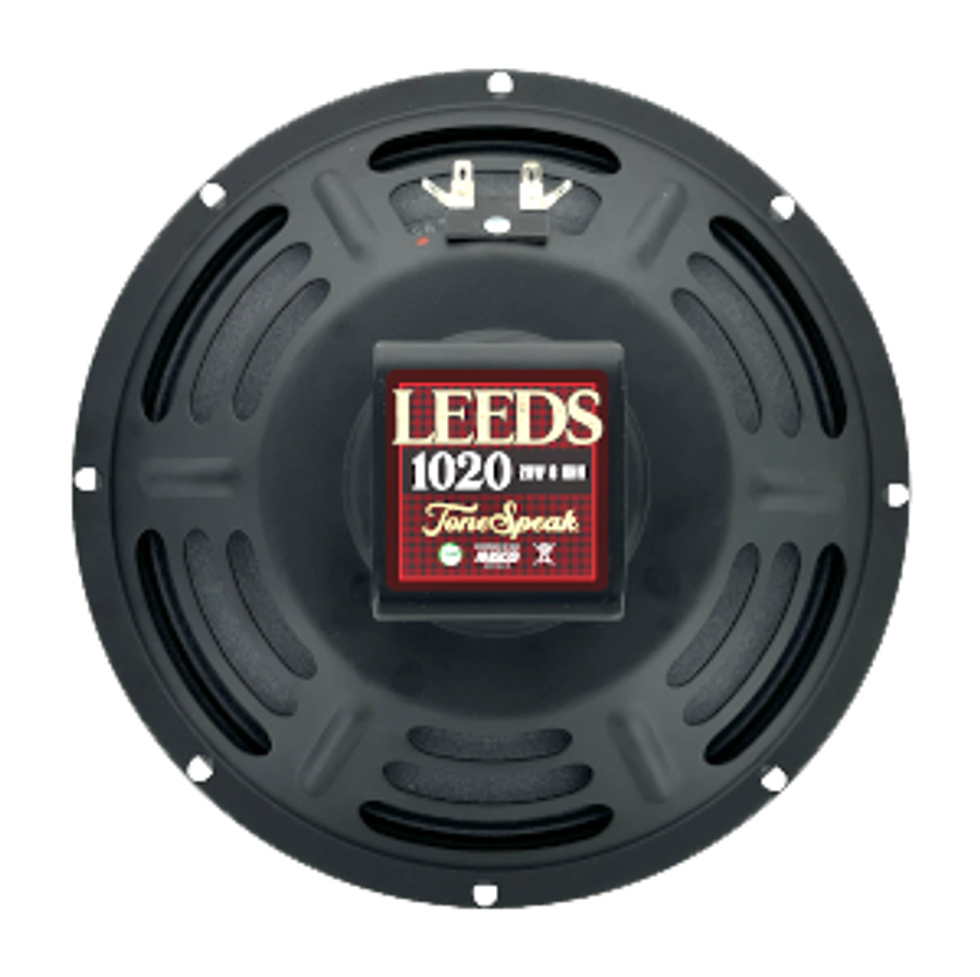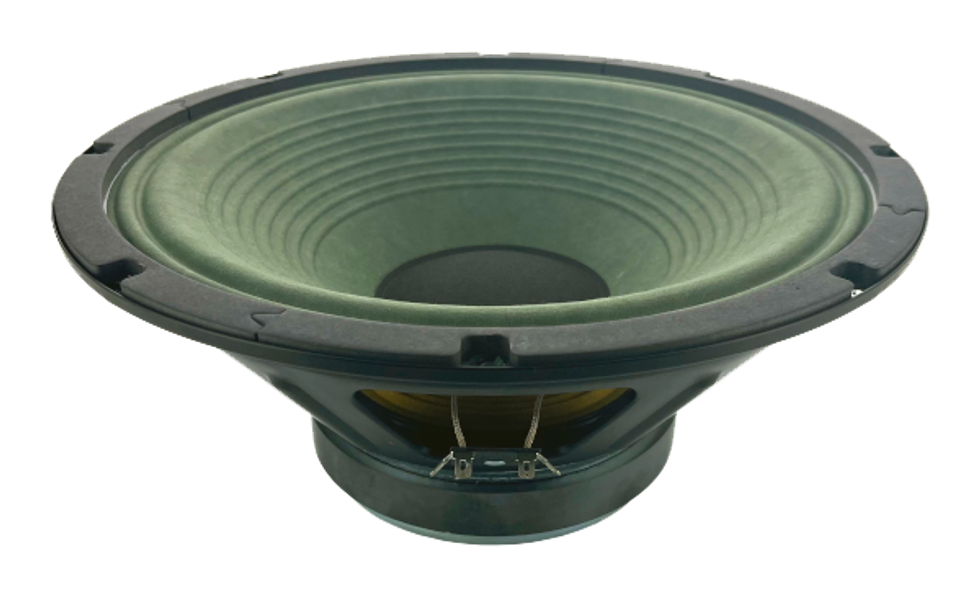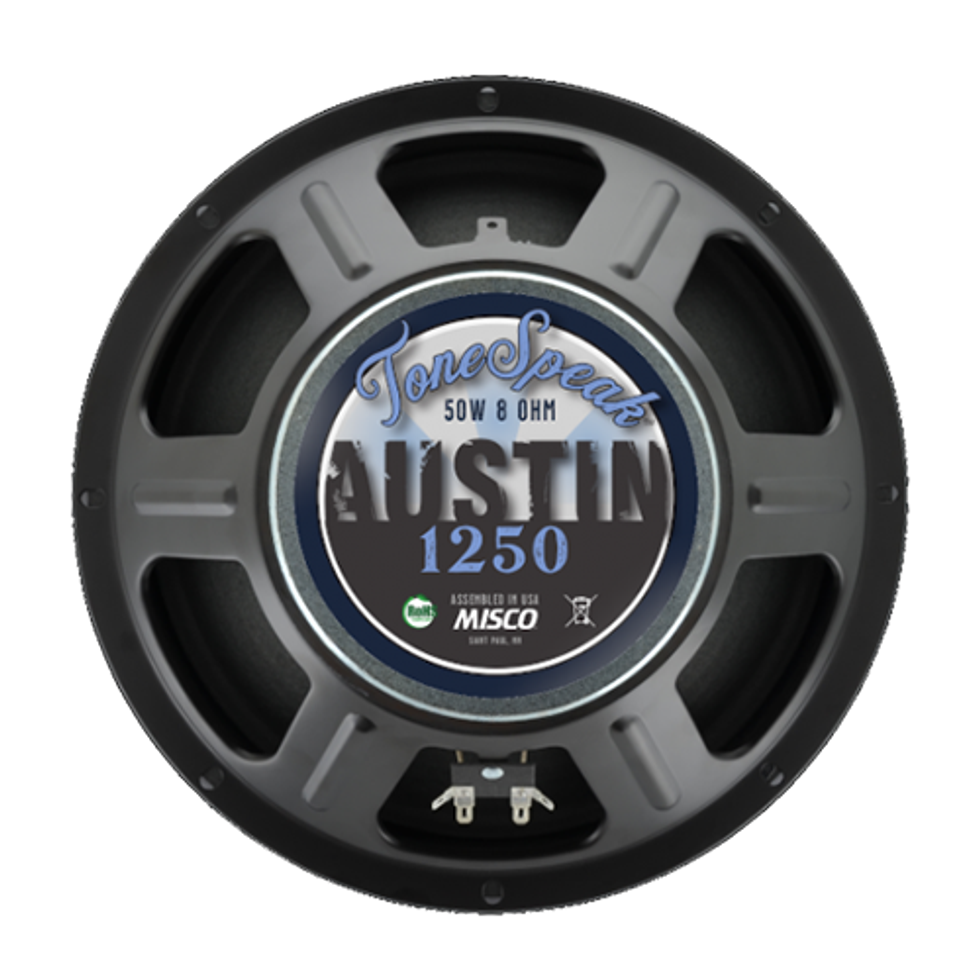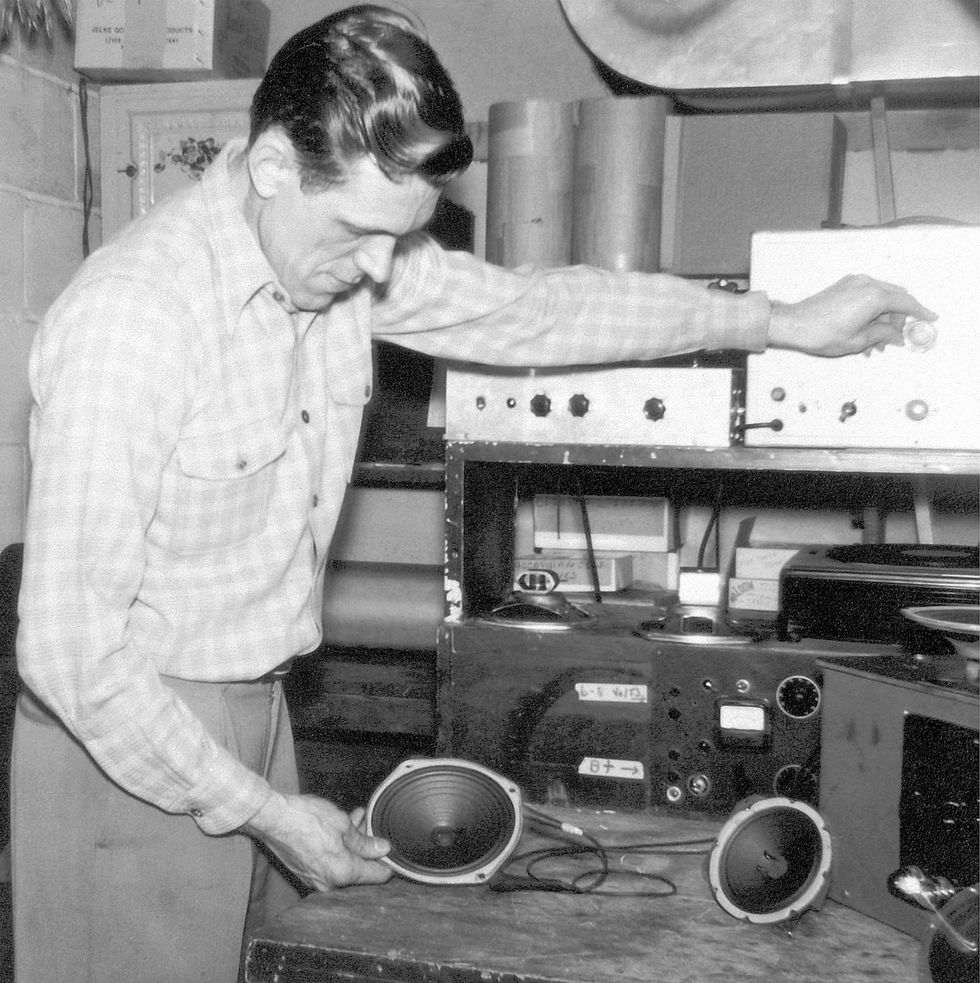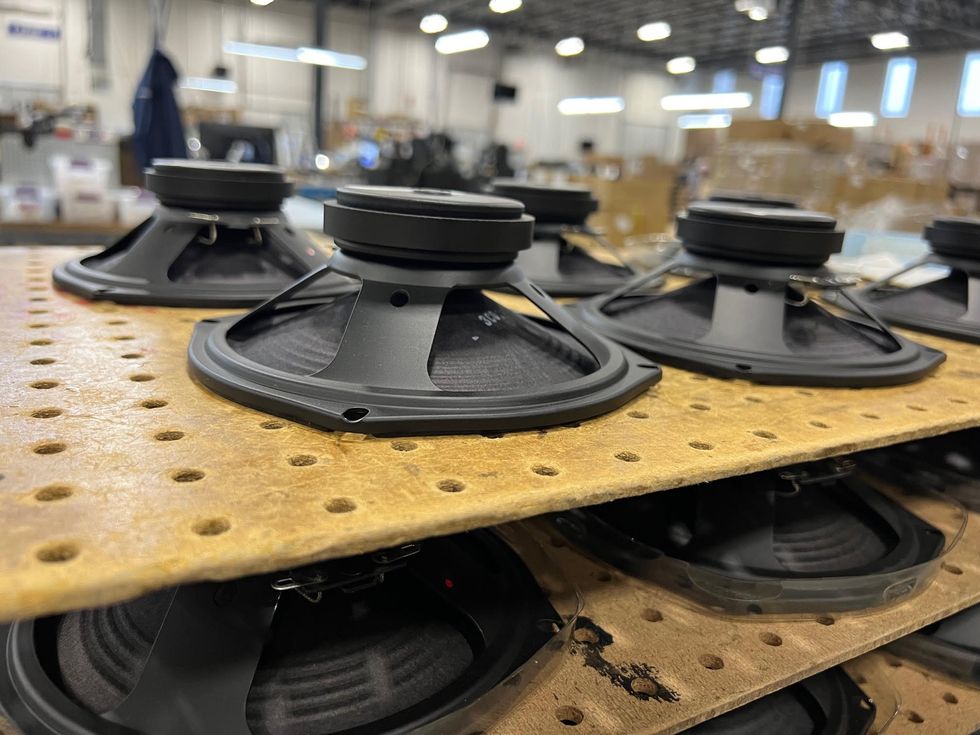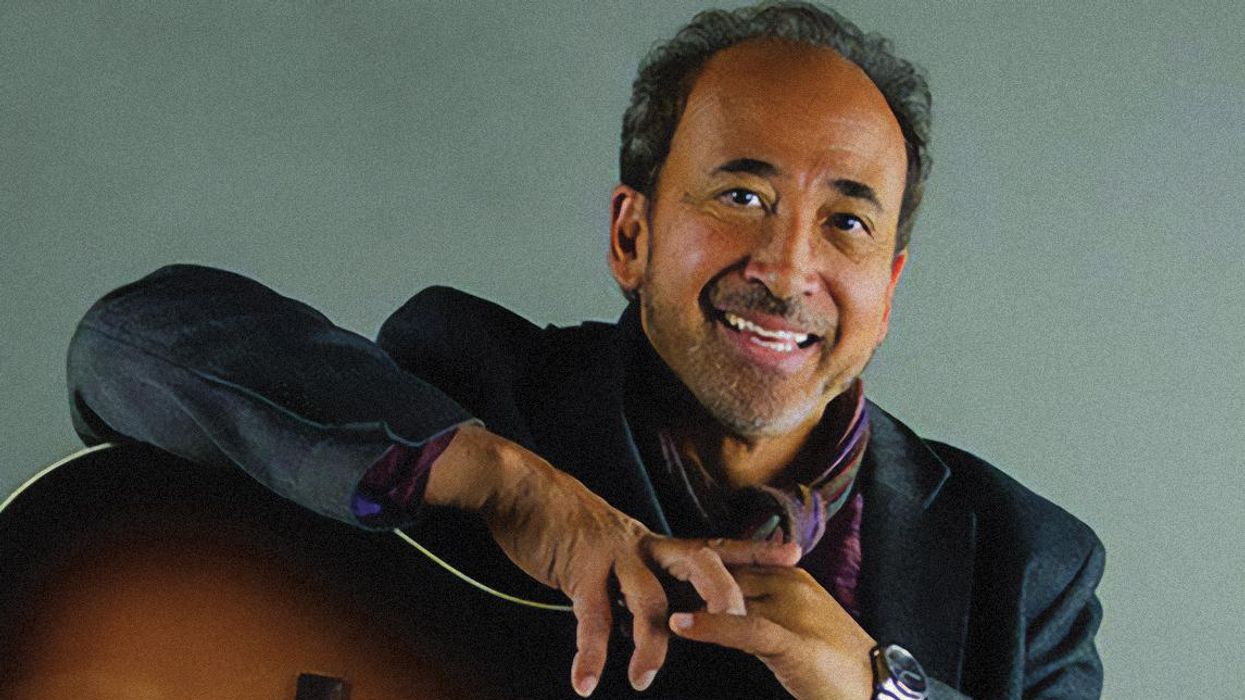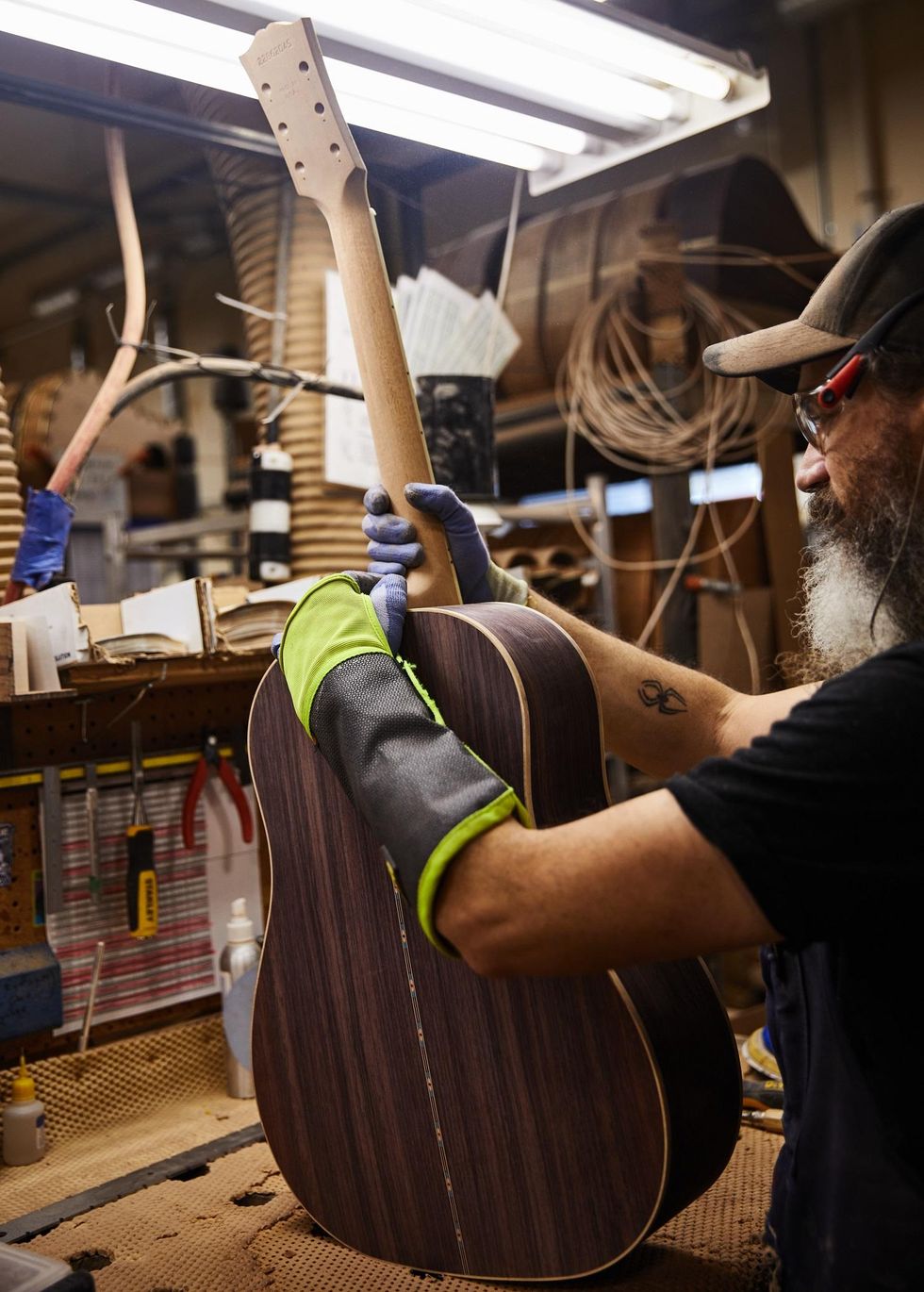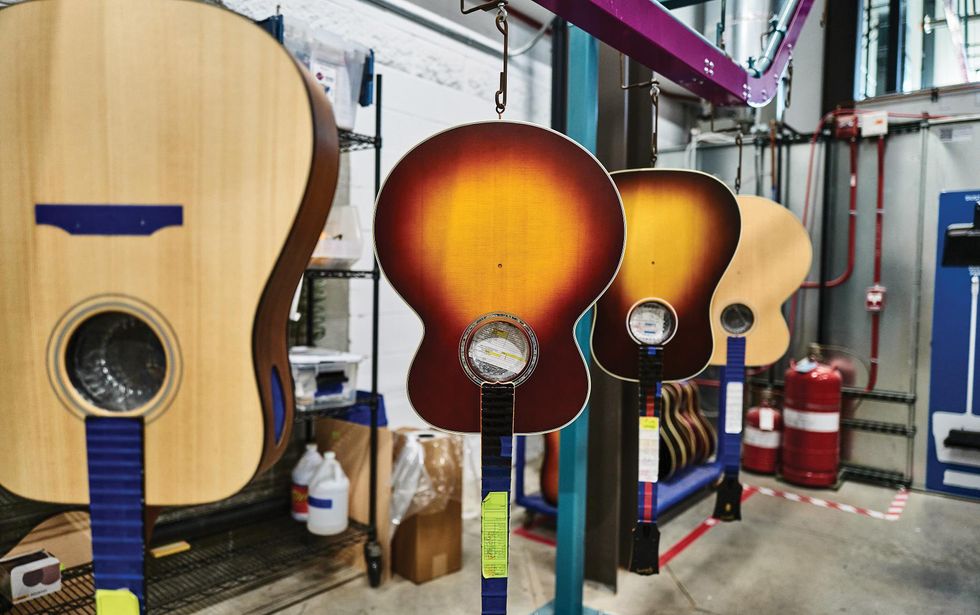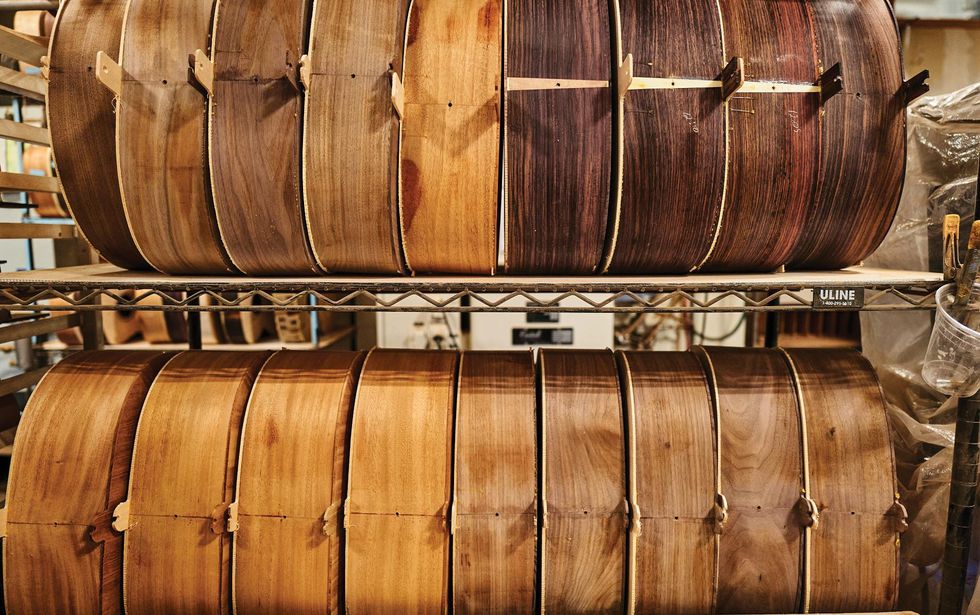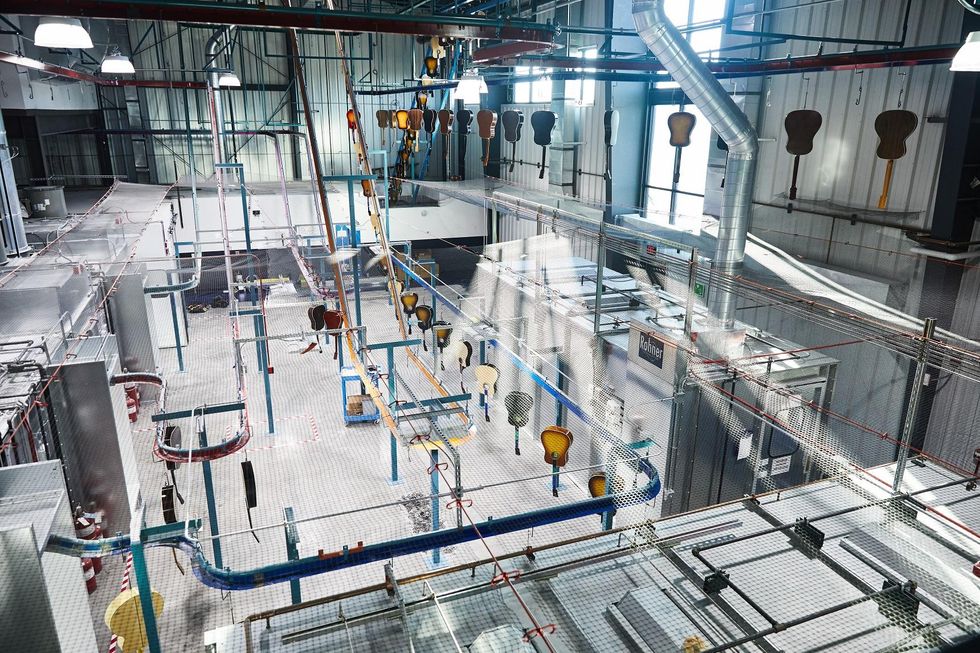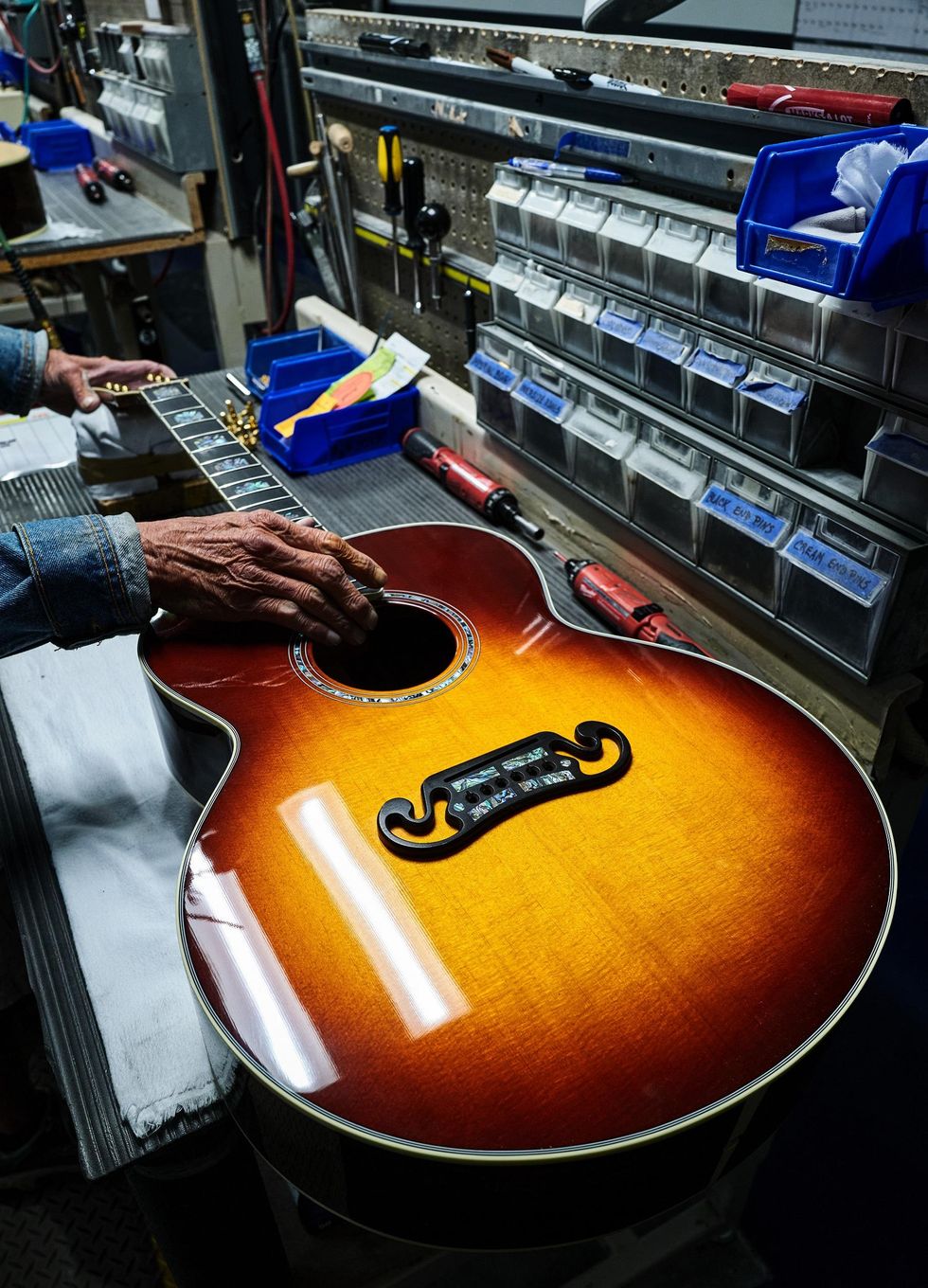“I’m not gonna follow you, you’re gonna follow me.” As soon as I hear these words, I realize this is Carlos Lopez’s ethos. Throughout his career, the Souther California-based luthier has forged his own path, landing a job at Fender at a young age, soon moving into the custom shop, and rising to prominence as one of the company’s elite master builders. But in 2021, he took a big leap when he left that position—which many of his former colleagues hold for decades—and with his wife, Stephanie, started their family guitar company, Castedosa. Maybe bigger still: Their flagship model? An electric baritone built to command top dollar.
“When people are doing the same thing, I’m gonna do something different. I’ve always had that,” Lopez says, adding “nobody’s doing a high-end baritone.” Inspired by low-end-loving guitarists like Mark Lettieri and Ariel Posen, he saw the instrument as his way to set his new company apart.
It was a bold move, but as Lopez tells it, that’s his style.
Growing up in ’90s East Los Angeles, Lopez felt like he was living near the heart of guitar culture. He witnessed plenty of players ripping at backyard barbecues and was inspired to pick up the instrument. Soon, he was learning Santana songs and reading about Steve Vai and Joe Satriani in guitar magazines, which, along with tales of onetime local-legend Eddie Van Halen that circulated the area, fueled his musical fire. When college approached, Lopez sought a way to be a part of the guitar community, but not as a player. With the encouragement of his mother, he enrolled at Musicians Institute to be a guitar tech.“When people are doing the same thing, I’m gonna do something different. I’ve always had that.”
Upon graduation, one of Lopez’s teachers told him about some job openings on Fender’s assembly line. “I got a job real quick,” he remembers. “The Highway Ones were on the line when I started.” Lopez found something familiar as his passion for guitar-building grew. “I felt real comfortable. All the people that worked there were primarily Latino and Hispanic and were the age of my mom and my aunts. It was a home and it felt like that.”
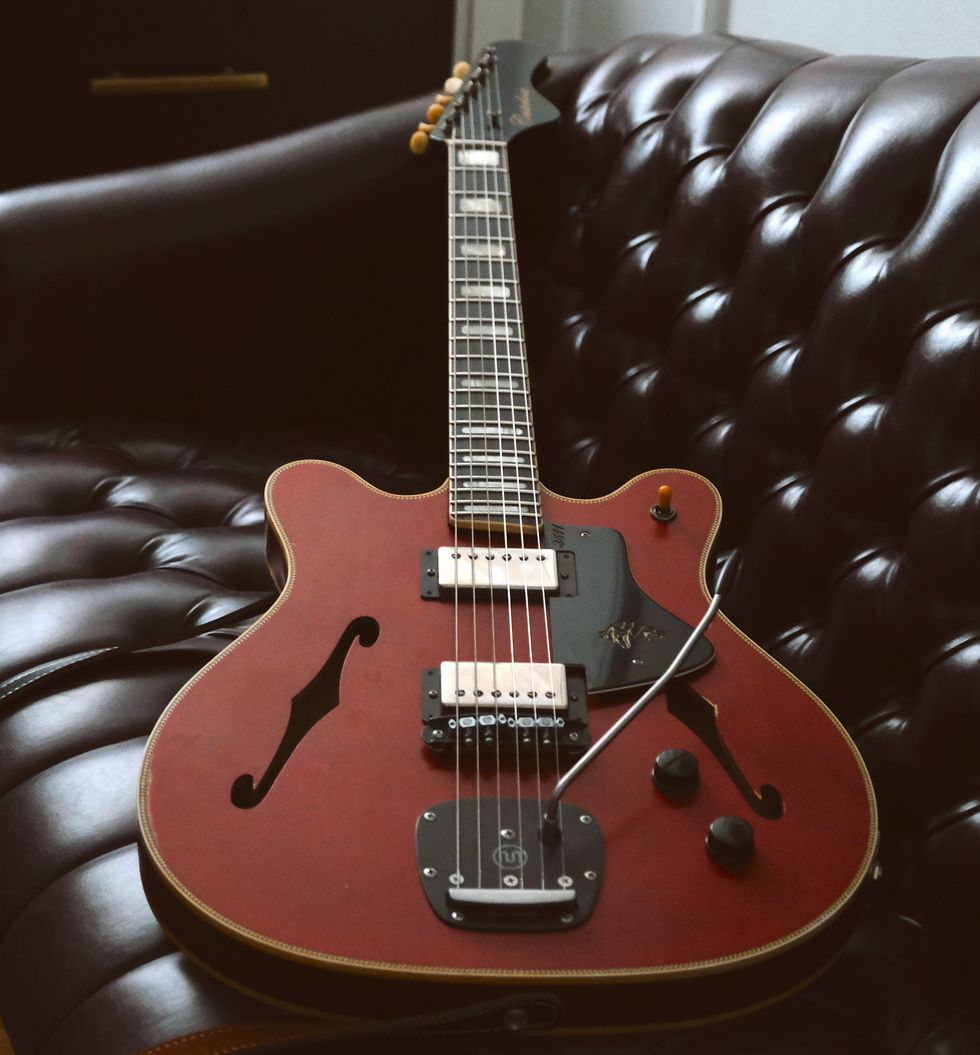
The foundation of Lopez’s work is his ability to blend classic design into new forms, as seen in this 3511 Lobo.
Photo by Nick Millevoi
He didn’t stay on the line for long, and Lopez says his “false sense of arrogance” gave him the confidence to go for exactly what he wanted. “I’ve always had kind of a chip on my shoulder because of where I grew up,” which he calls “kind of a rough neighborhood.” So, not long into his tenure at Fender, “I went to the director of the custom shop, I showed him my shitty guitar that I made [in school], and said, ‘I should be in the custom shop.’ Within a year, I started working in the team-built custom shop.”
Now on the inside of the “secret lair” where “some of the best builders in the world” were creating high-end Fenders, Lopez remembers that he took advantage of his access, picking the brains of his co-workers at each stage of building, rotating his way through all the positions in the shop, and soaking up as much knowledge as he could.
At the same time, Lopez was active at home, where he’d set up his own workshop in his living room. When he left Fender for the day, the journeyman builder would go home and get back to work doing repairs for local musicians or building his own guitars. “I was always hustling,” he recalls.
After about 13 or 14 years at Fender, a position in the prestigious Masterbuilt shop opened up, and Lopez recalls he was an easy fit. During his time working as apprentice to Todd Krause in the team-built shop, Lopez created instruments for top-level players that include Eric Clapton, Jeff Beck, and Robbie Robertson, and it gave him the confidence to take on the master-builder position and flex his creativity.
“Everybody has their thing. You have to create your own name for yourself.”
“Everybody has their thing,” Lopez says of the Masterbuilt team. “You have to create your own name for yourself.” Lopez saw his ‘thing’ not in the shape of a Strat or Tele, but in the oddball Marauder and Electric XII. “They’re forgotten, so I found something that could separate me, so that was the first thing I did. I knew there was a cool story there.” Auspiciously, he also created the Fender Brawler Baritone model.
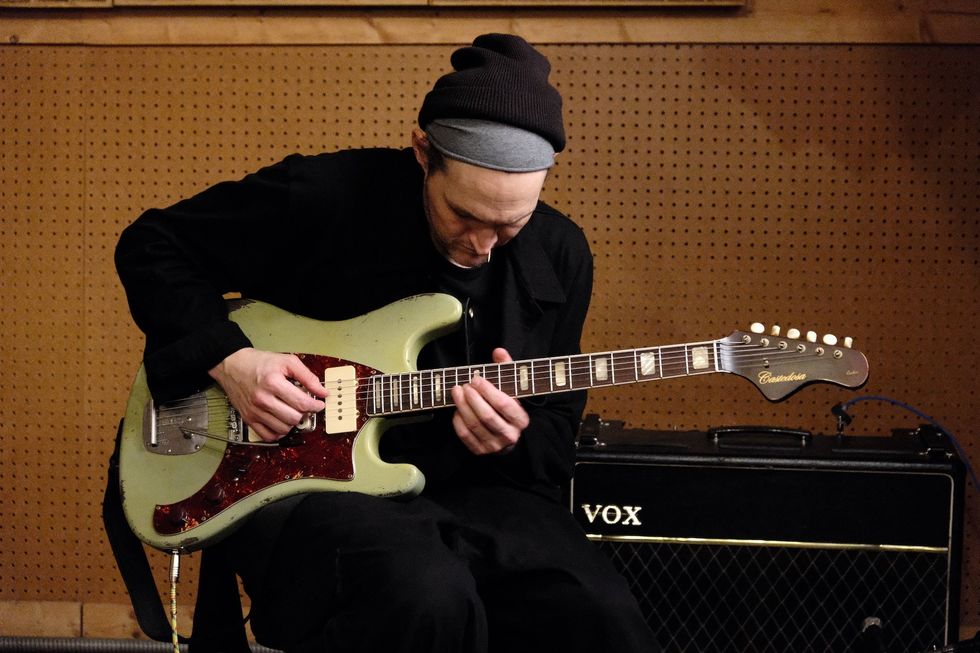
Former Chili Pepper and freelance guitarist Josh Klinghoffer has been a supporter of Lopez’s since his Fender days. He got so stoked by his Conchers Baritones that he bought a round of them for his Pearl Jam bandmates.
Photo courtesy of Castedosa Guitars
If you’ve never handled one of Lopez’s Fenders—I haven’t either—YouTube is going to have to suffice. There’s a video of former Chili Pepper and freelance guitarist extraordinaire Josh Klinghoffer ripping the extreme double-neck Marauder/Electric XII beast that Lopez built in 2021. (While taping his demo, Klinghoffer fell so in love with the guitar that he eventually snatched it up for himself when it popped up on Reverb.) If you’re the type of person to get into oddball builds, this is as good an initiation in Lopez’s world as it gets. From there, dive into Carlos’ Instagram feed and have at it. (Good luck.)
As tony as the master-builder job sounds to those of us on the outside, it wasn’t long until Lopez was looking beyond the company. Spurred by a series of close personal losses during the pandemic, Lopez began thinking about his own legacy. Ultimately, he explains, feeling like he wanted to create something of his own and for his family, he left Fender in 2021, and started the family business.
“I need it to be where it’s recognizable but different.”
The foundation of Castedosa—a word that is a combination of letters from Carlos, Stephanie, and their two children’s names—is Lopez’s aesthetic, which by 2021 was well documented in his eclectic and eye-catching creations at Fender. Lopez is one of just a small cadre of boutique builders working today whose designs evoke the timeless feel of classic models and manage to create something that is entirely fresh, innovating within familiar forms. Castedosa’s debut model, the Conchers Baritone, offers an alternate history of baritone guitar, setting a new, high-level standard of building and design. “I need it to be where it’s recognizable but different,” Lopez says. “That’s the goal of the shape. But when you play it, it’s different.”
At Central New Jersey’s Relic Music, a dealer specializing in boutique builders, high-end and hard-to-find brands, and vintage instruments, I had the opportunity to play a Conchers Baritone. (While it wasn’t for sale, Relic’s owner, Mike Nicosia, hooked it up for PG and called in a favor to guitarist Scott Rieger, who purchased the guitar.)
I’ve been looking at photos of Castedosa baritones since they first hit Instagram, and visually, the body style, the finish, the knobs, the headstock design, the entire instrument surpassed my expectations in three dimensions. Upon picking up the guitar, the first thing that caught my attention was the roasted maple neck with rosewood fretboard, which boasts a 1.725" nut width. With a 27" scale length, it’s a substantial instrument. But after a few warmup licks to get a handle on the feel, I recognized the significant V-shaped profile in the lower frets made it easy to navigate and even encouraged longer reaches, gently softening as I made my way up the neck. Somehow, this long bari felt easier to handle than most standard 6-strings.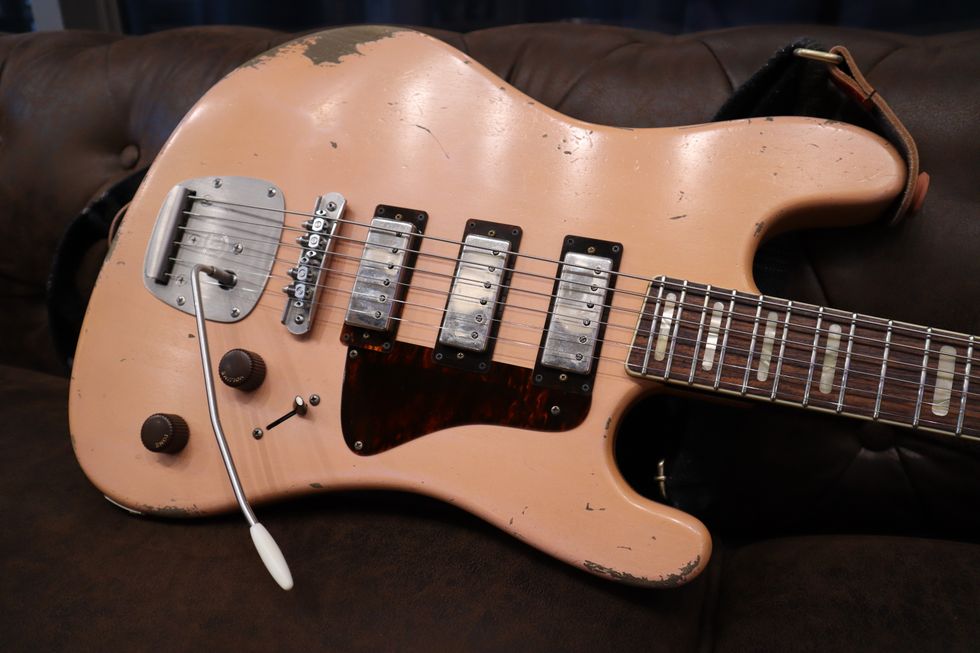
The Conchers Baritone played for this piece was responsive, resonant, and hard to put down.
Photo by Nick Millevoi
As I sat with the Conchers, I pulled out all my bari-guitar tricks, from delicately plucked arpeggios and faux-Ennio Morricone melodies—meant to coax the twang out of the low strings—to quick, articulated lines that cross strings, extension-heavy chords across the range of the neck, and brute power chording. I was rewarded at each approach as I got to know this responsive, resonant instrument, which sits in a class with some of the finest luthier-built guitars I’ve laid my hands on. (It’s worth mentioning here that Lopez did tell me, “I hate calling myself a luthier, I hate putting titles on things.”)
I was struck by the warm, even voice of Castedosa’s in-house mini-humbuckers. Not entirely unlike a PAF—and visually way cool—they are major contributors to the new-classic vibe of the Conchers. “I did a lot of [research and development] on the pickups—they need to be right. The mini-hums that I did just sounded great,” says Lopez. And once he dialed in the design, he trained Stephanie how to wind them. (She’d never worked in guitar building before, but he says that immediately “she just had the feel. She’s a natural.”) Paired with a Hiwatt Custom 20 head and Hiwatt 1x12 cab loaded with a Fane Purpleback, plus a little reverb from a Mr. Black Supermoon, the bari simply sang. Simply put, I could have written an entire record around the Conchers right there in Relic’s showroom.
Some two-plus years into the company, it’s early to gauge Castedosa’s mark. But it’s obvious the Lopezes have made a strong start.
“Carlos is revolutionizing the use of baritones in music.” —Josh Klinghoffer
“Anything that I saw out of the Masterbuilt shop that I really dug has had Carlos’ name attached to it,” says Nicosia. “What I love about Carlos is there is zero compromise anywhere. He’s building the guitars he wants to build and doing it from an inspired place.” Relic’s customers, he points out, have noticed as well.
With Lopez’s Masterbuilt pedigree, notable players were bound to follow, and some have been especially quick to get hip. Posen and My Chemical Romance’s Frank Iero are early adopters, and Lopez cites Klinghoffer as a big supporter. “Everything I needed to know about him was communicated by the fact that he decided to be the guy that starts making Marauders,” says Klinghoffer, who first purchased one of his Fender Marauders, followed by an Electric XII. Then, he says, “I just saved a ‘Carlos Lopez’ search on Reverb.”
When Lopez left Fender, Klinghoffer was struck by the “enormously heartwarming story” of the Lopez family business and he bought Conchers Baritone #3. “I fell in love with that thing instantly. There were baritones on the market, and they were fine and serviceable, but they weren’t sexy. Carlos is revolutionizing the use of baritones in music. Finally having a really well done, well-conceived, beautiful instrument in front of you, how could you not be inspired?”
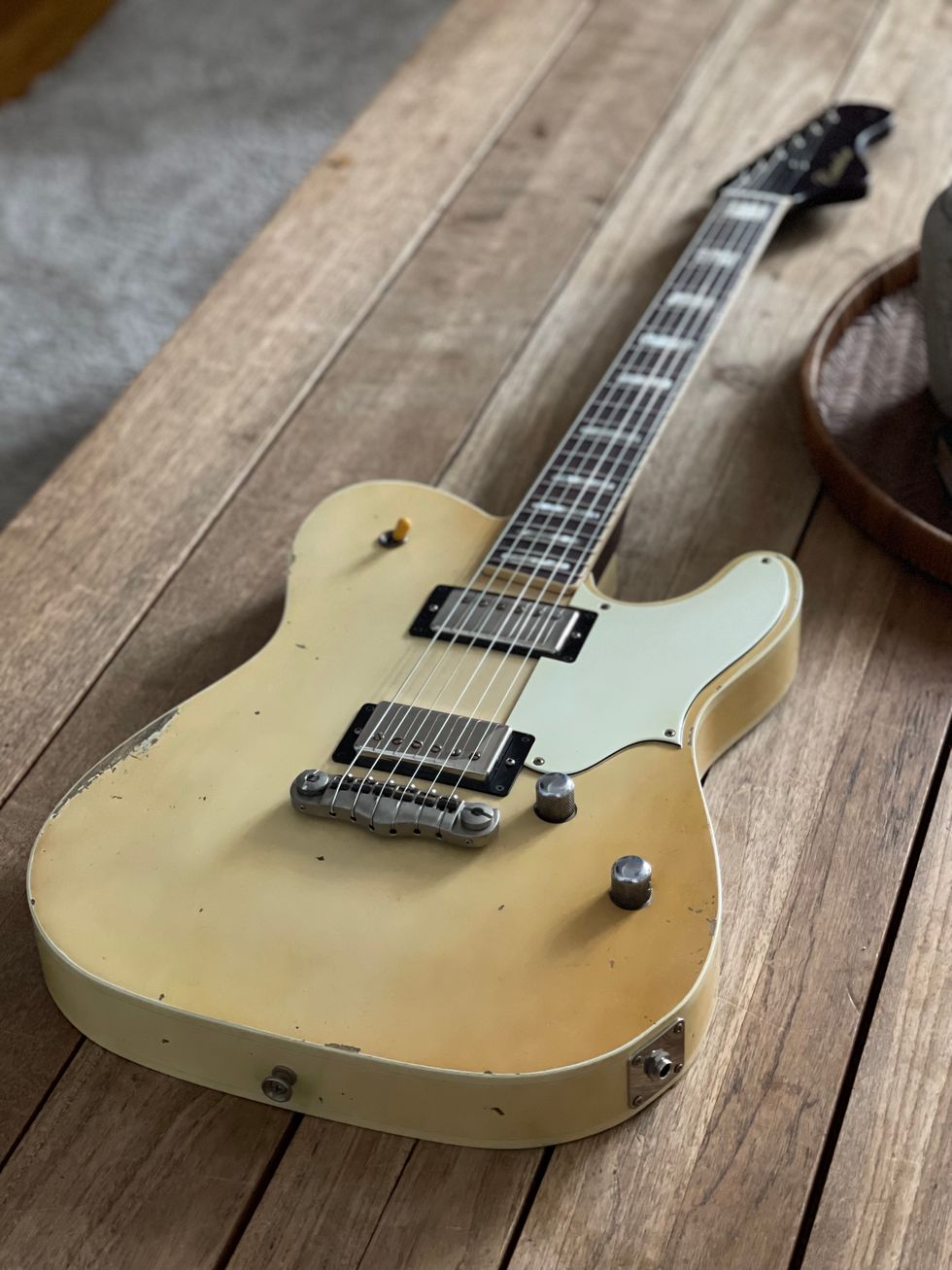
In the shape of a T-style—in this case a double-humbucker Marianna—Lopez’s aesthetic shines.
Photo courtesy of Castedosa Guitars
Klinghoffer also eventually purchased #13 and #33. Then, following his 2022 tour with Pearl Jam, he purchased a Conchers Baritone for each member of the band. “I can show this person and this business this kind of support and show gratitude to my new home, my new band,” he says. “It all comes down to my love of guitars, Carlos’ love of guitars, all five guys in Pearl Jam’s love of guitars.” For about a year, he adds, Mike McCready sent him a video every month or so of his Conchers Baritone in action.
The guitarist is certainly helping get the Castedosa name out there. (In addition to the Pearl Jam guitars, he purchased a few more as gifts to fill out what he thinks is the entire lot of serial numbers in the 50s.) And with six models now in the catalog—Conchers Baritone; Conchers Standard; the Marianna, Lopez’s take on a T-style; the monstrous double-neck baritone/12-string; the semi-hollow 3511 Lobo; and a short-scale bass—Castedosa seems to have hit its stride. Apprentice Connor Moore also left Fender to join the team, and more models are on the way.
In each Castedosa build, it’s obvious that Lopez enjoys poring over the details, from the obvious aesthetic elements, like body, headstock shape, and finish, to sonic touches, like pickup design. He even mentions approaching his fret ends with a signature flourish—“You’ll see what I mean when you play one,” he tells me. I immediately did. They’re rounded with a distinctive ball-like end that make for a smooth playing experience and sleek look.
And the builder wants to keep his head in the details. He isn’t looking to scale up too much and take over the world. Instead, he plans to stick with the market he knows and build what he wants to build, which will keep Castedosa in the high-end lane.
“I just want to make something special and unique and live in that world,” he says. “I like being in the shadows, being in the limited-quantity, sought-after market, and I want to continue doing what I’m doing.”
YouTube It
Klinghoffer puts a Conchers Baritone with built-in fuzz circuit through a thorough and thrilling sonic evaluation.


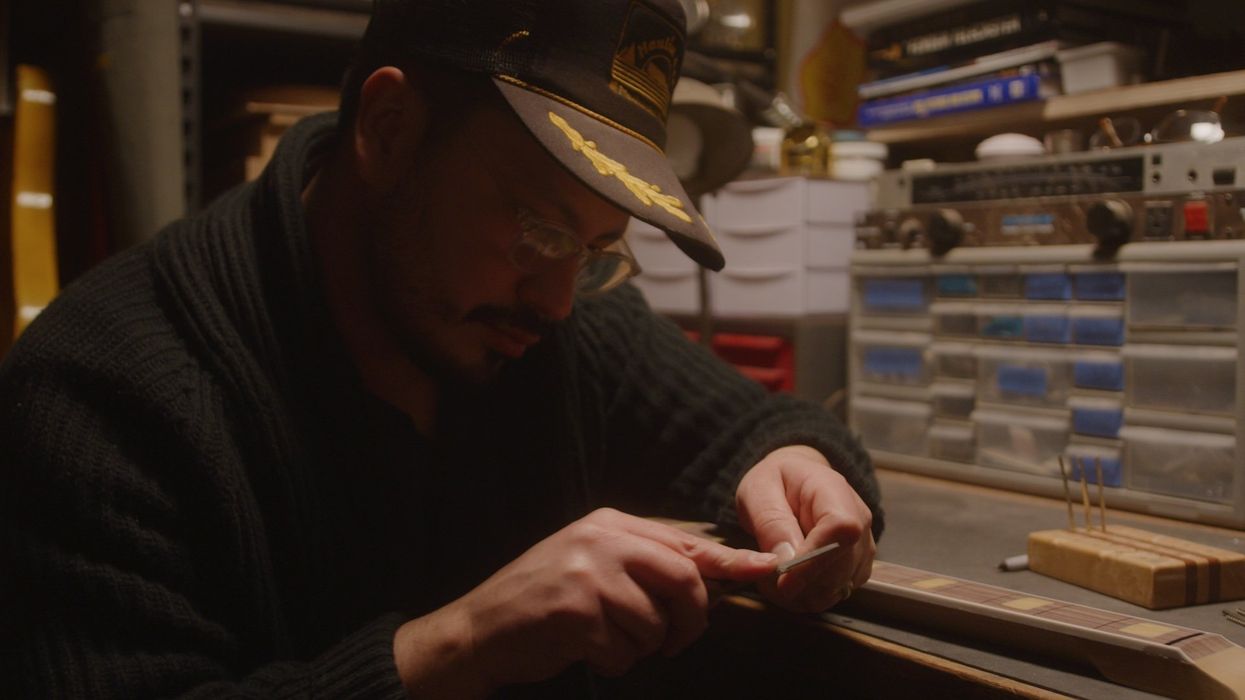

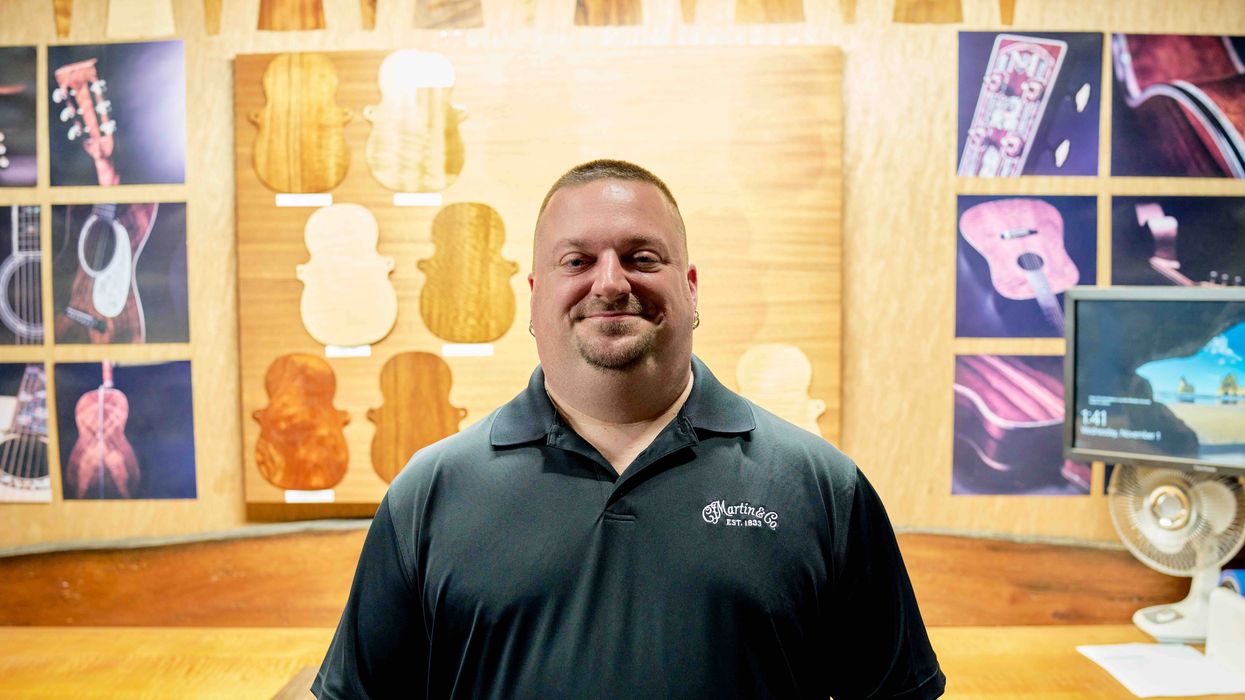
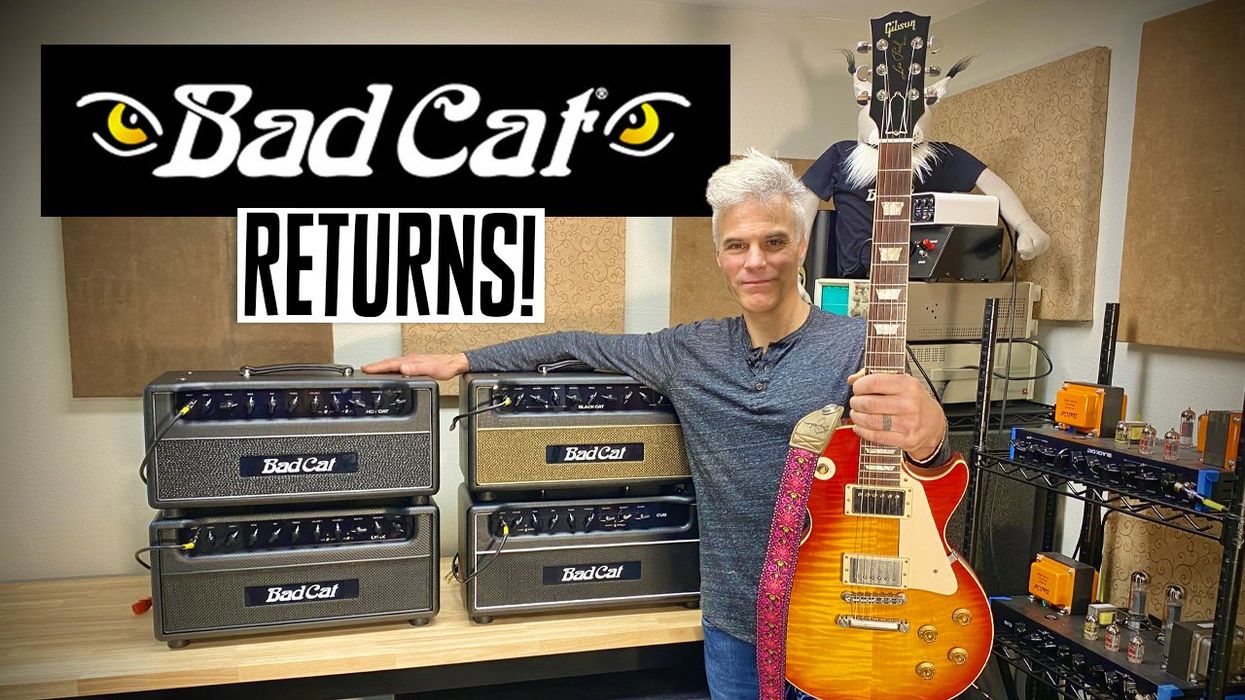
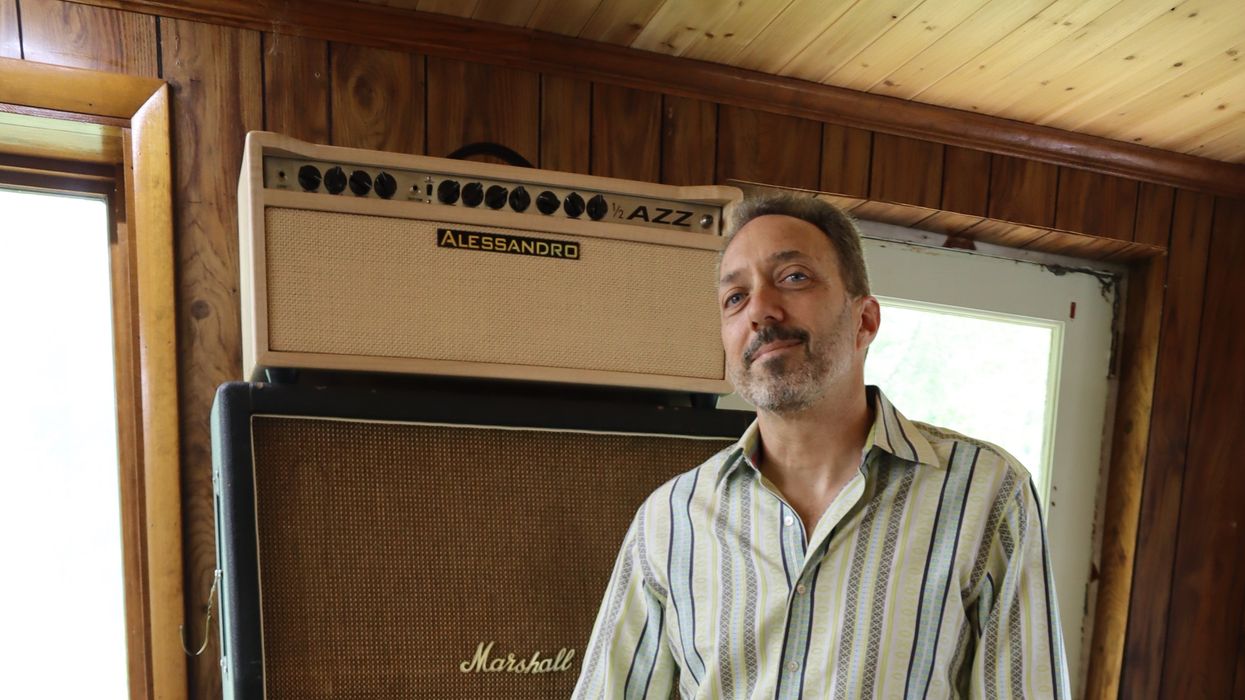
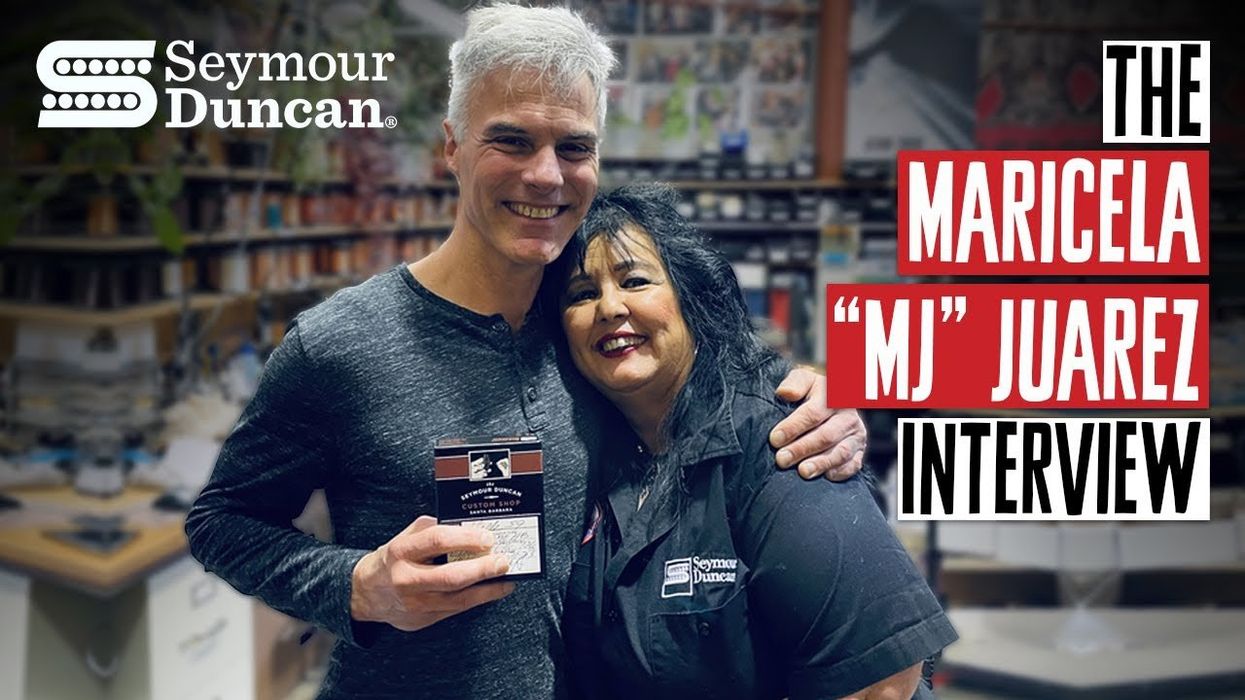

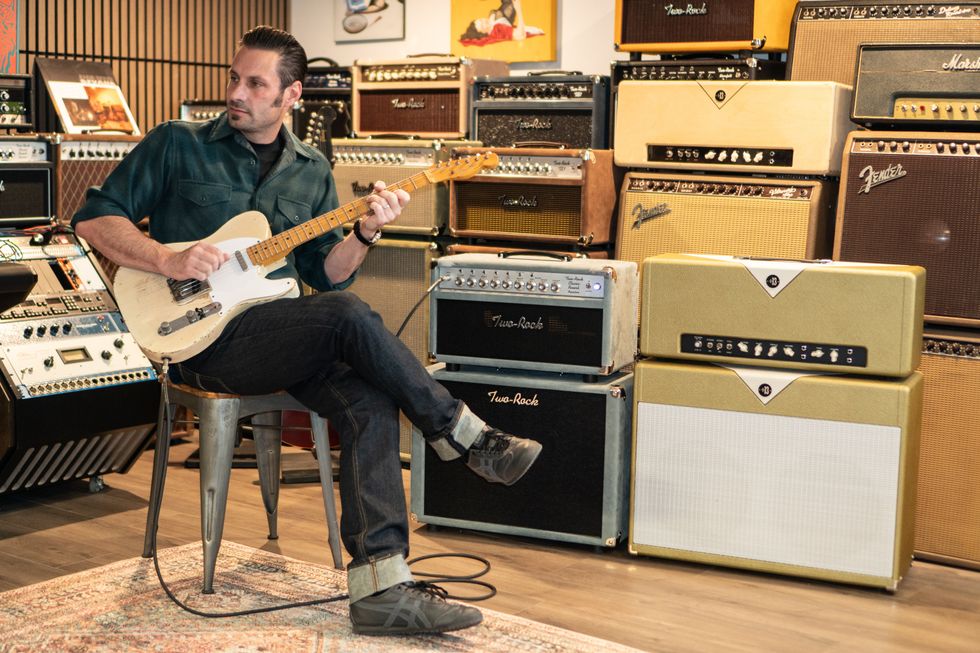
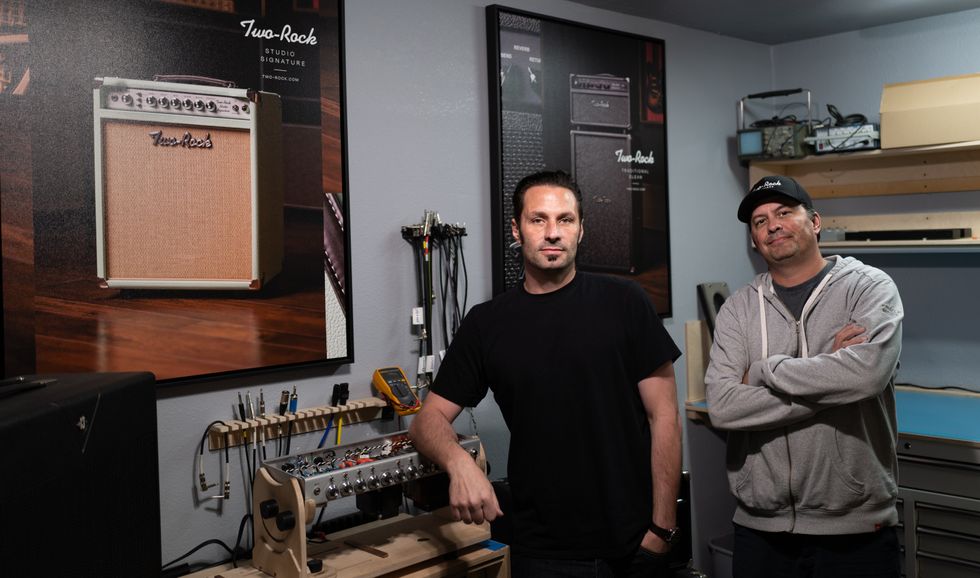
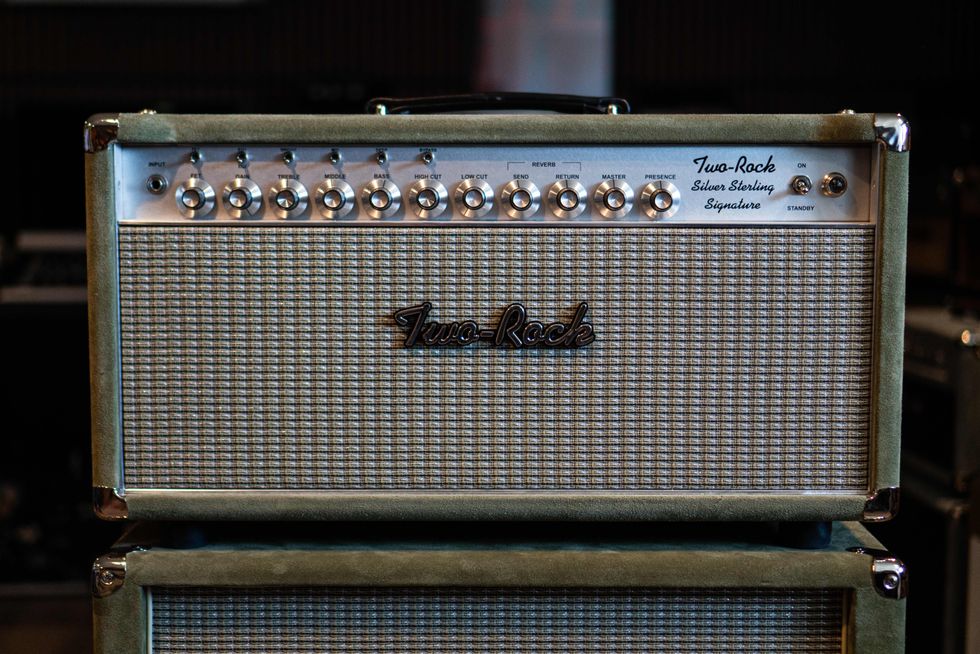
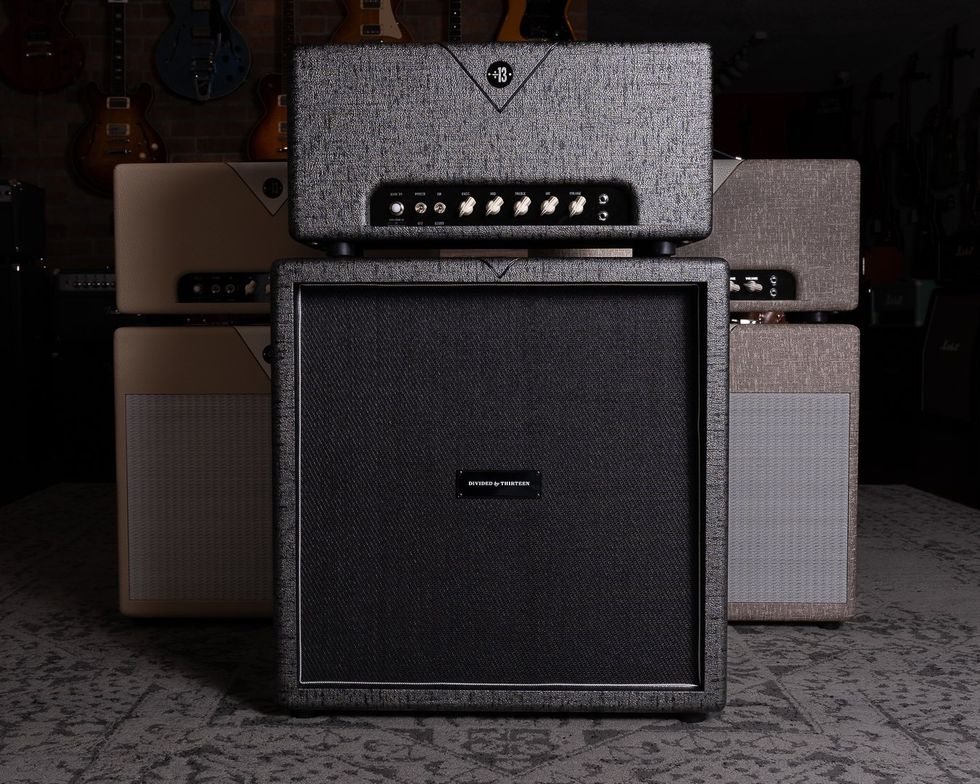
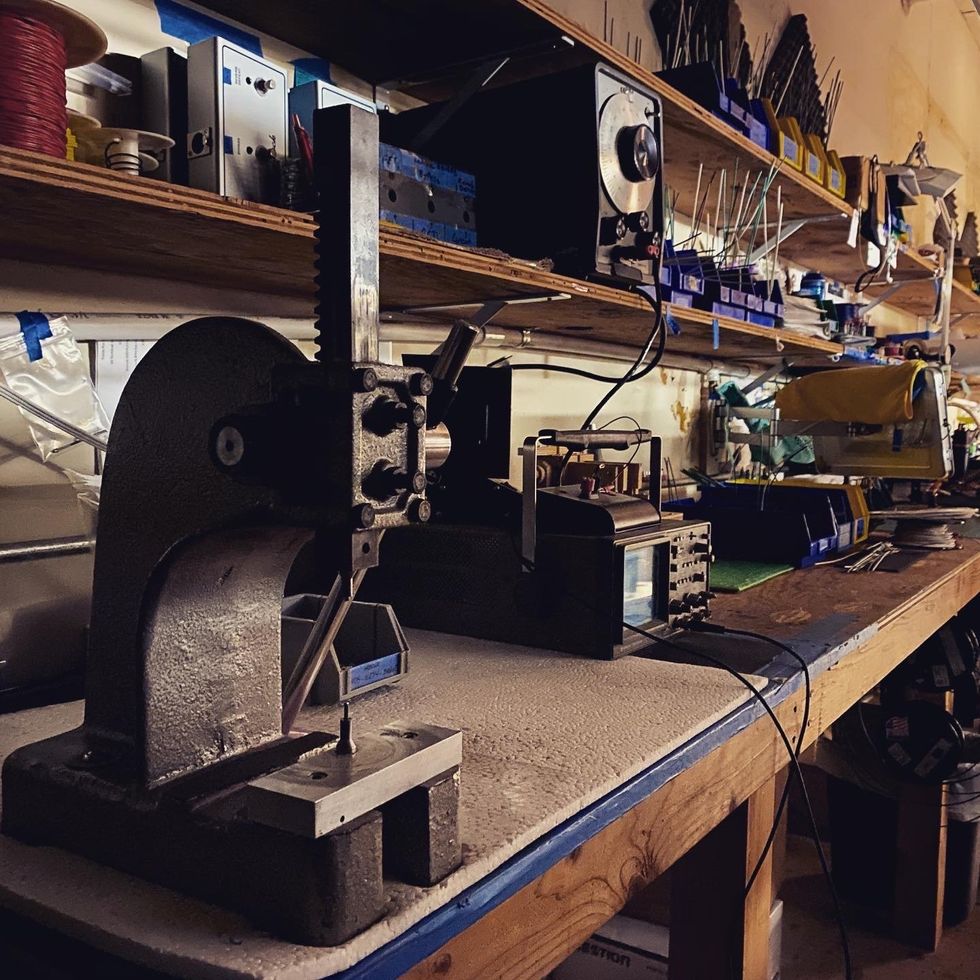



![Rig Rundown: Russian Circles’ Mike Sullivan [2025]](https://www.premierguitar.com/media-library/youtube.jpg?id=62303631&width=1245&height=700&quality=70&coordinates=0%2C0%2C0%2C0)


